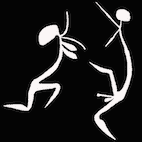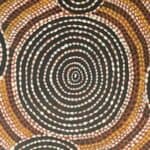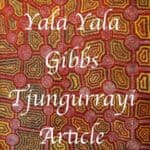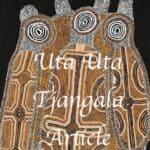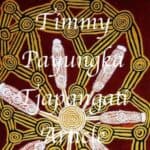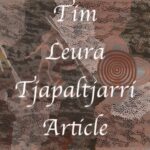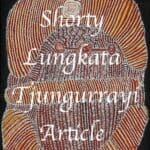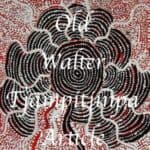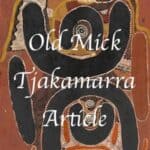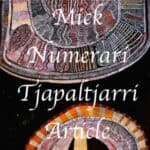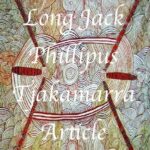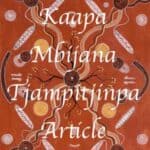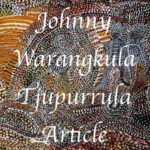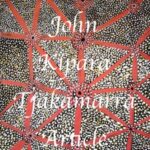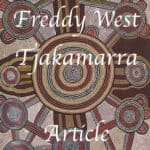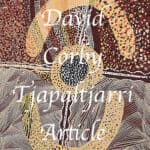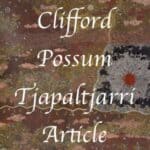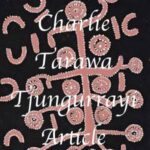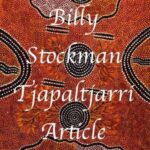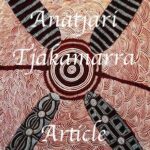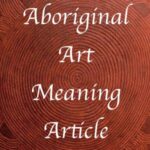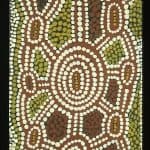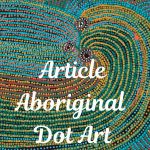Anatjari Tjakamarra : Aboriginal Paintings
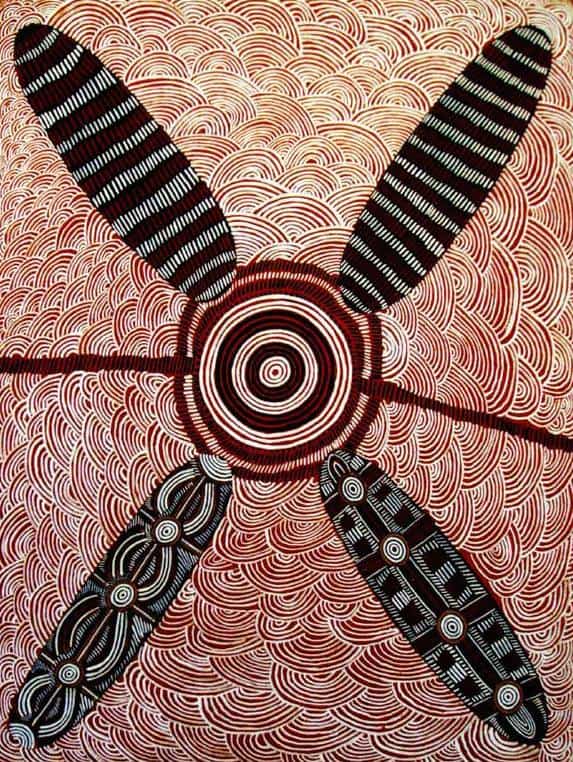
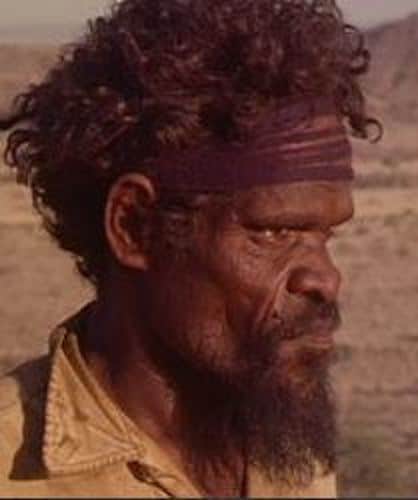
Anatjari Tjakamarra early Life
Anatjari Tjakamarra was born around 1938. He spent his first 30 years in a traditional nomadic desert aboriginal lifestyle. He was one of the last aboriginal nomads to leave his homeland and resettle in the town of Papunya.
In Papunya, Anatjari initially worked with, John Tjakamarra Yala Yala and Freddy West as a farm laborer. Later he worked as a gardener with Uta Uta and Long Jack Tjakamarra at the local Papunya primary school.
Geoff Bardon a local school teacher had encouraged local people to paint and record their traditional stories. Antajari Tjakamarra was one of these early western desert painters. The painters would congregate after work and discuss their stories and experiment artistically. From the outset, he emerged as a focused and compelling artist.
Early painting
Anatjari Tjakamarra’s earliest paintings often were of ceremonial objects. These objects were often on a black background. Many of these ceremonial objects were secret and sacred. It is a testament to his customary authority that he could paint them.
Anatjari’s early works were strongly influenced by the precise linework of Kaapa Tjampitjinpa. This precise linework soon came to characterize his own paintings.
Bardon played a crucial role as a friend and adviser for Anatjari Tjakamarra. He guided his raw intensity of early experimentation. He helped him develop a more disciplined and workable visual language.
His Early works are full of traditional aboriginal art meaning and are sort after and collectible.
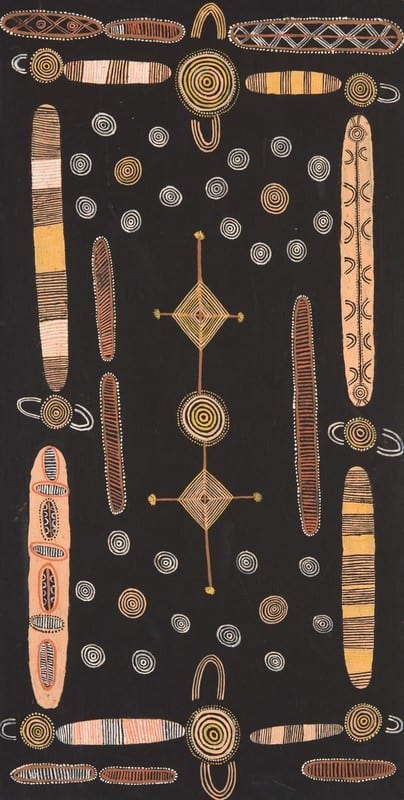
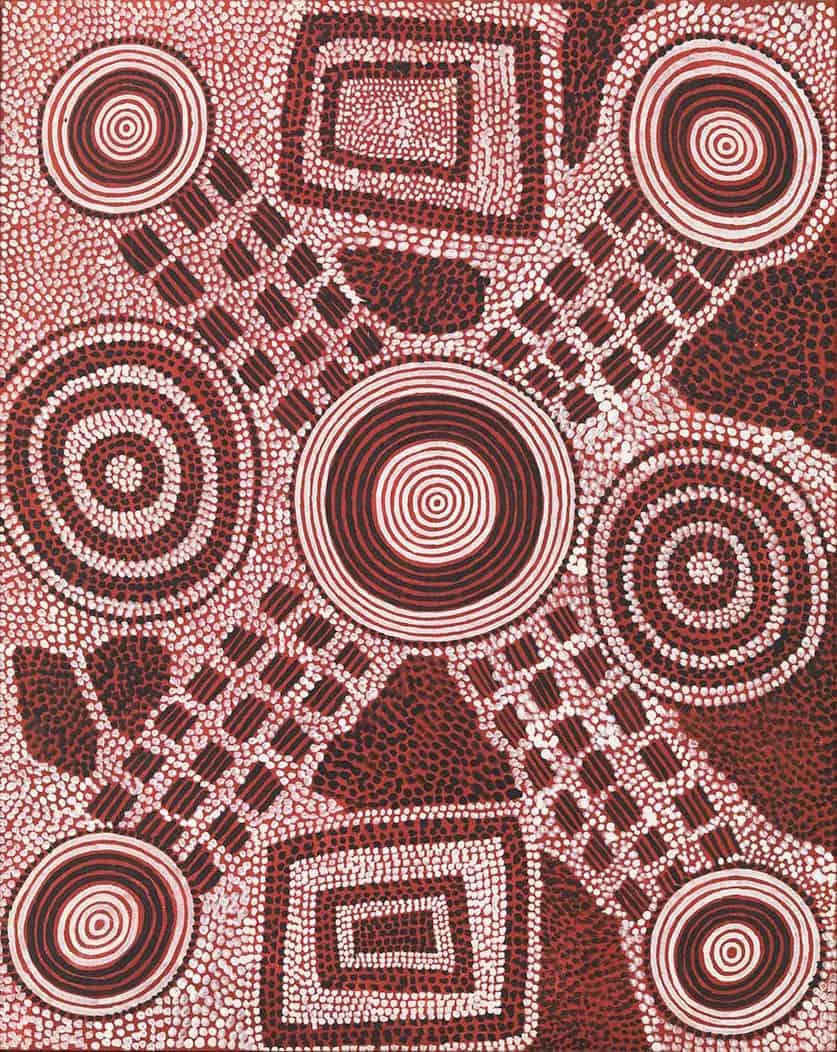
Anatjari Tjakamarra: The pink period
During what is sometimes referred to as his “Pink Period,” Anatjari Tjakamarra moved away from using plain black backgrounds in his paintings. Instead, he began incorporating intricate red and white designs. Over time, these colours would frequently blend to create a striking deep pink impression that became characteristic of this phase in his work. Alongside these stylistic changes, Anatjari continued to depict sacred objects and the symbolic designs found on them. Despite his evolving aesthetic, his art remained ritually precise, embedding secret imagery intended only for the eyes of initiated men.
Furthermore, Anatjari’s painting process allowed him to maintain a spiritual connection with his country. Through his art, he stayed in touch with the sacred sites that provided life and meaning to his people. This deep connection is especially palpable in his early works. As Geoffrey Bardon observed, Anatjari was “forever traveling west to his beloved homelands and affirming the sacredness of the places there.”
In addition, his compositions often formed a complex graphic network—lines of travel that linked significant sites and resting places. These interconnected lines created dense, symbolic maps of Pintupi country. Many of his paintings portrayed ceremonies associated with the Tingari Cycle, a central aspect of Pintupi cultural life. With focused dedication, Anatjari quickly refined his artistic method. Ultimately, his innovations helped shape and define the distinctive Pintupi style that would influence generations of artists to come.
Anatjari Tjakamarra: Late period
In the early 1980s, Anatjari Tjakamarra left Papunya and established a camp at Tjukula in Western Australia. There, he continued to paint and began selling his artworks independently, marking a shift in both his creative and professional approach.
During this period, he began working on canvas and linen, which allowed him to create much larger compositions than before. As a result, these larger works often embraced a more abstract style and were less constrained by traditional conventions.
Importantly, unlike some of his contemporaries from the early Papunya movement, Anatjari did not fall into the trap of sacrificing quality for commercial gain. On the contrary, this consistent dedication to craftsmanship helped elevate some of his later canvas works to become among the most sought-after and valuable in the Western Desert art movement.
From his base at Tjukula, Anatjari produced artworks that were included in several landmark exhibitions. Notably, his works appeared in Dot and Circle (1985), followed by Face of the Centre. In 1988, his paintings featured prominently in both the Dreamings and The Inspired Dream exhibitions, further cementing his reputation.
Later, in the mid-1980s, he moved to the newly established community of Kiwirrkurra. Prior to his passing in 1992, he held solo exhibitions at the John Weber Gallery in New York and the Gabrielle Pizzi Gallery in Melbourne, demonstrating the growing international recognition of his work.
Significantly, Anatjari became the first of the Western Desert painters to be represented in a major international art collection. The Metropolitan Museum of Art in New York acquired one of his paintings from the Papunya Tula exhibition in 1988—a milestone moment for Indigenous Australian art on the world stage.
It is also worth noting that his name appears in several variations, including Tjakamarra, Jakamarra, and Djakamarra. He is additionally known as Anatjari No. 3, Anatjari III, Anitjari, Yanatjarri, or Anatjara.
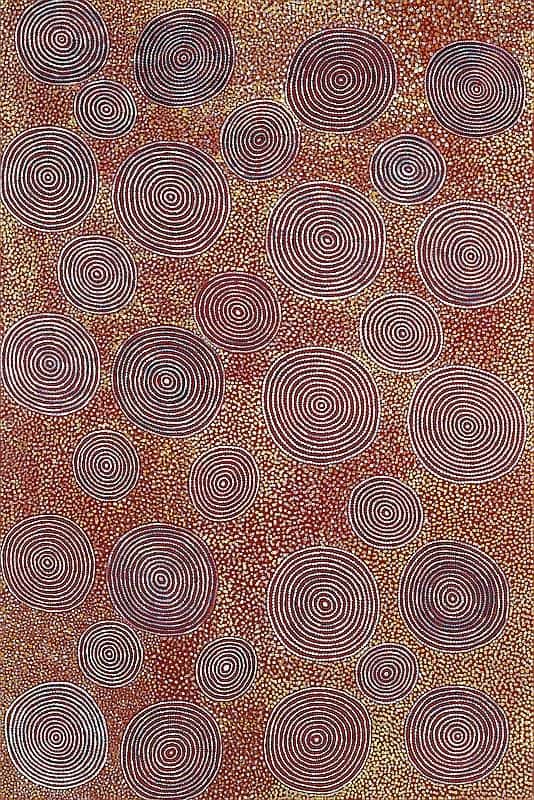
Anatjari Tjakamarra references
Papunya: A place made after the Story
Anatjari Tjakamarra Artwork Meanings
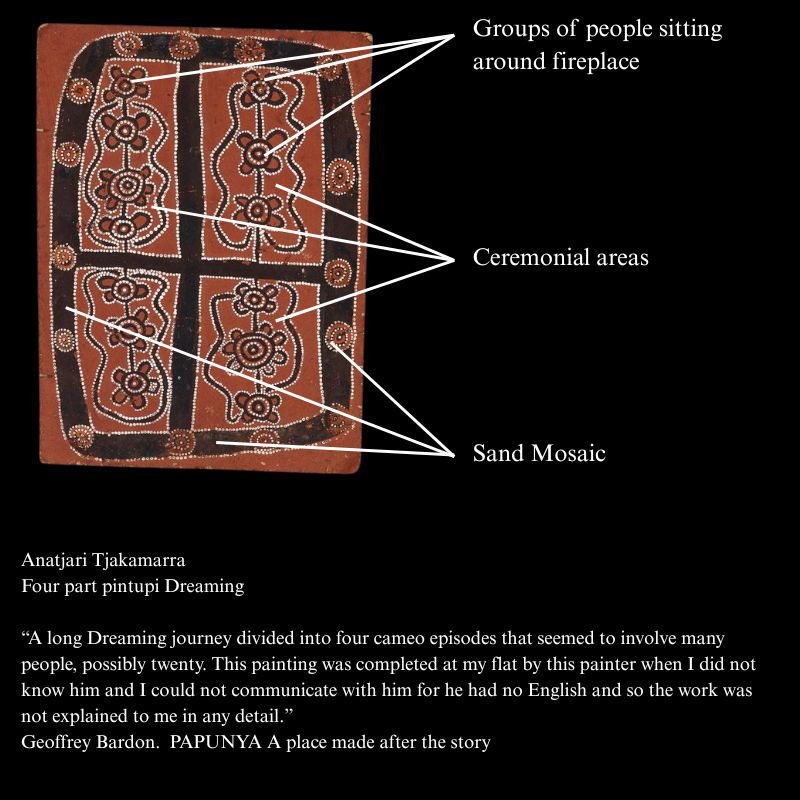
Kuninka
The central square is the camp of the Kuninka, or Western Quoll (Dasyurus geoffroyil). The other squares are caves surrounding the camp.
This painting details part of a Journey by a group of ceremonial novices under the direction of an ancestral Kuninka (Western Quoll).
The travellers shaped the features of the landscape on their journey towards Kaakurutintjinya a large salt lake. The square shapes depict the presence of the Kuninka in the landscape. The rectilinear forms however also allude to designs on ceremonial objects the Kuninka carried with him.
Kuninka Tjukurrpa Painted 1972- synthetic polymer paint on compressed fibre board
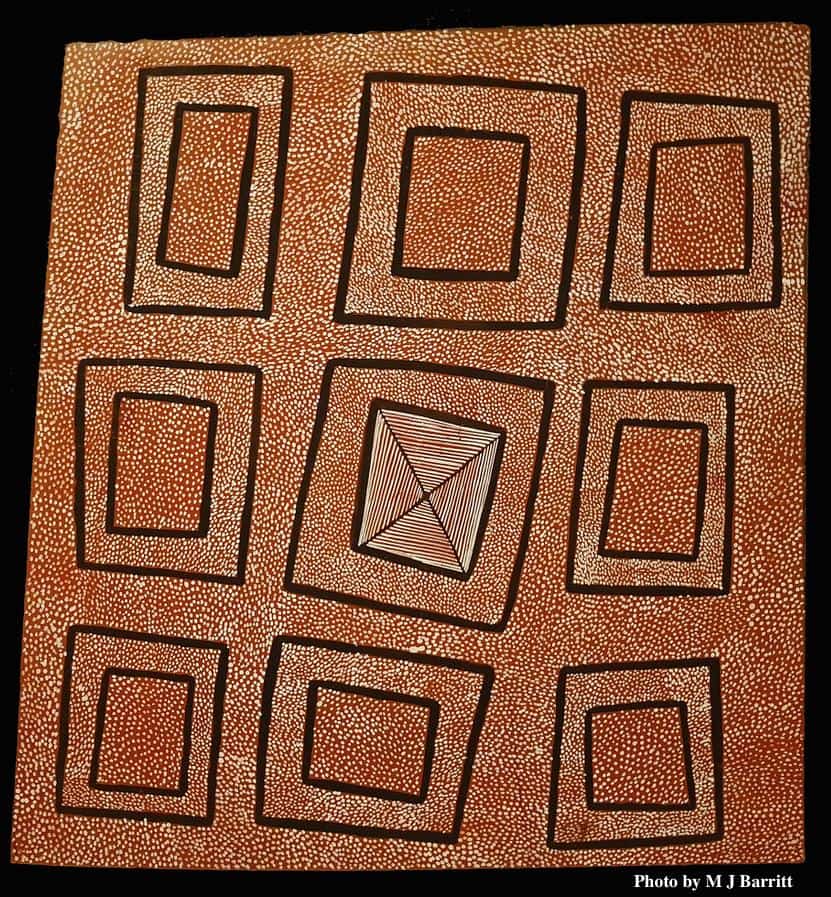
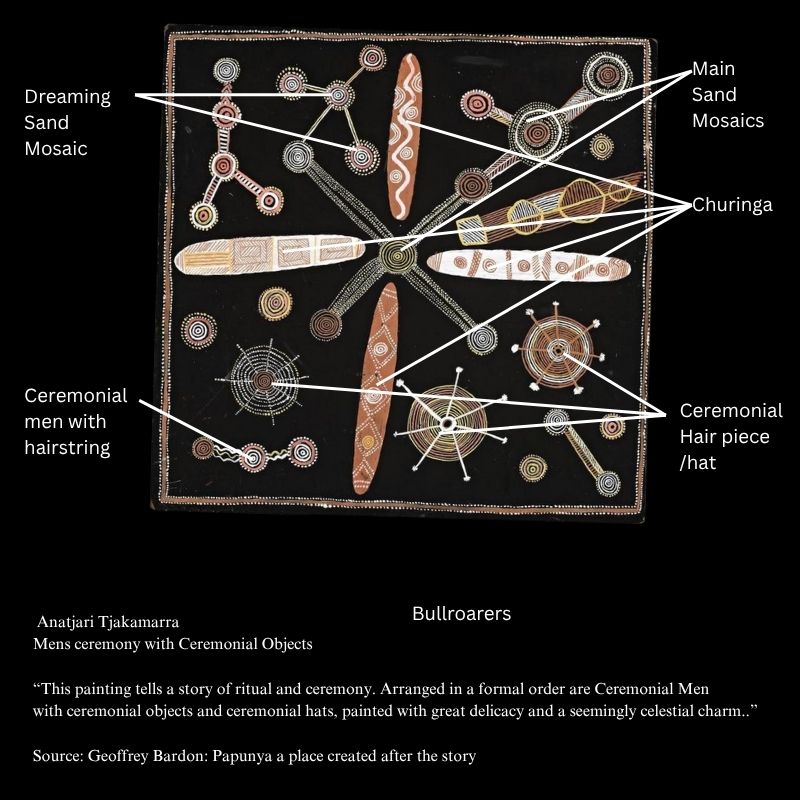
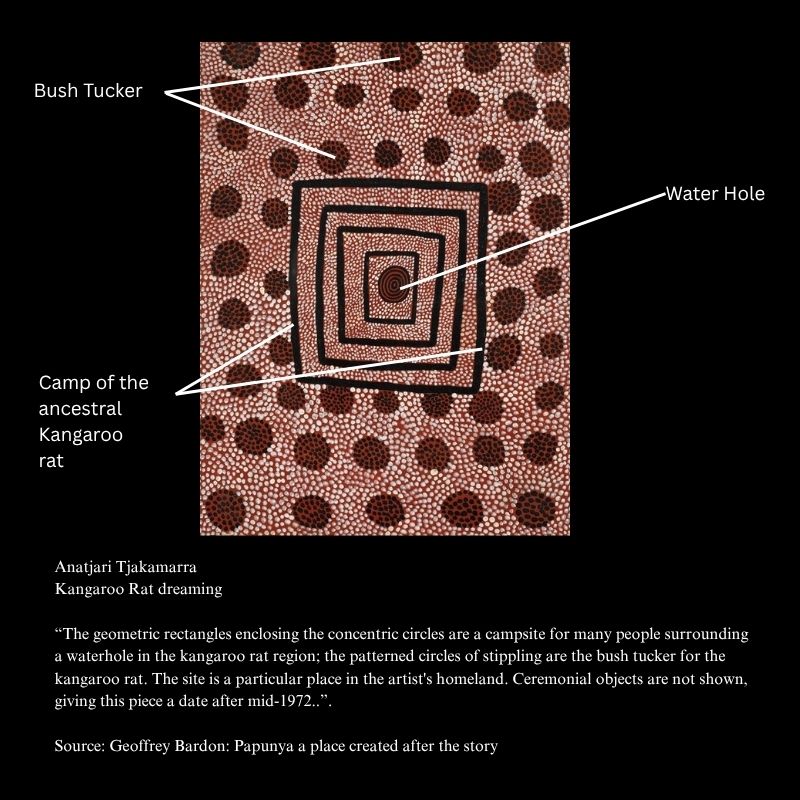
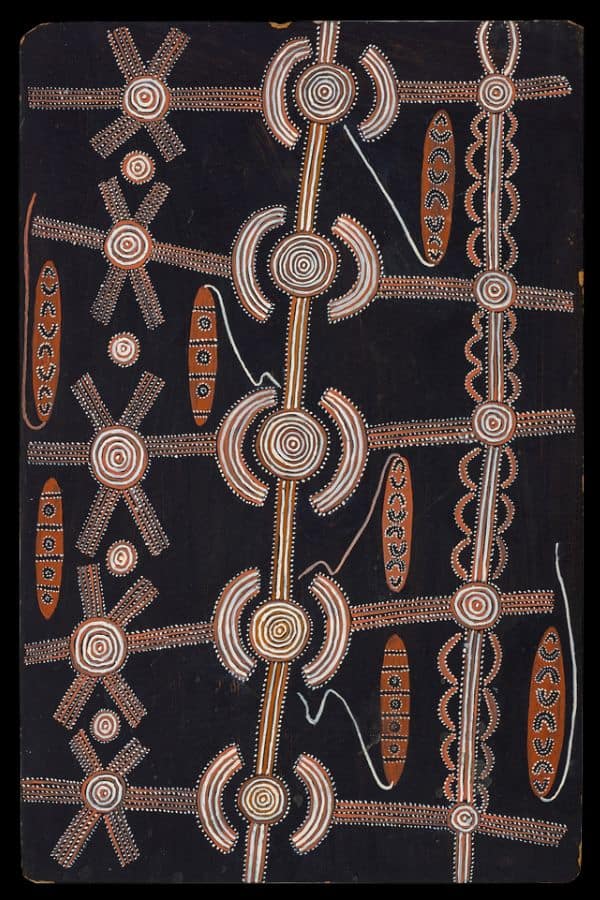
Painted 1972 with synthetic polymer powder paint on composition board 34 X 55 cm
Ceremony
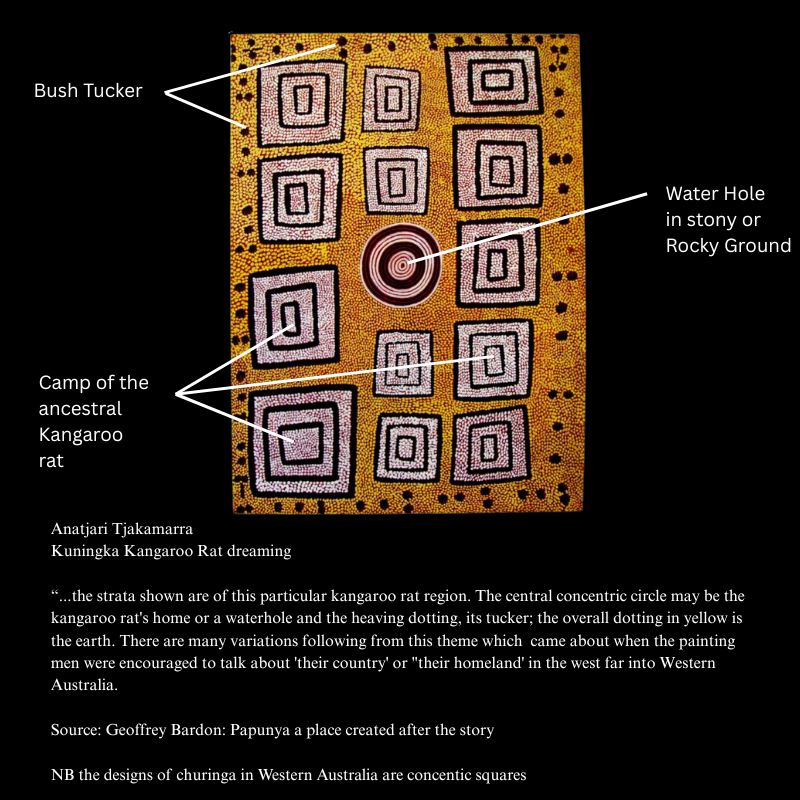
Early Papunya Artworks and Articles
All images in this article are for educational purposes only.
This site may contain copyrighted material the use of which was not specified by the copyright owner.
